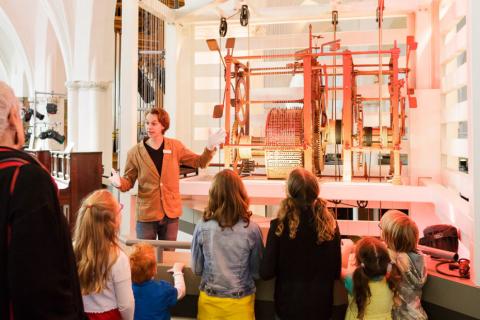Science Places: The Speelklok Museum
October 31, 2018By Sarah Van Horn
Wanderlust: that feverish disease that grips many of us who love to learn and explore. At Capitol Technology University, our students and alumni are the doers of the world. Getting up and out there is often a natural instinct. We know many of you love to travel, and it made us think: where would we go?
If you love learning about new places, traveling, and science then you’ve come to the right place. Through our Science Places series, we’ll do our best to travel around the world to some fascinating places that might just inspire your next project.
Our first stop is the Speelklok Museum in the Netherlands, where some amazing musical instruments of the past have come to rest their bones. Now if you’re thinking about an old violin in a glass case or the roped off harpsicord once played by Mozart then you’ve got the wrong idea. These are no ordinary musical instruments, and Speelklok is no ordinary museum.
The instruments at Speelklok are all marvels of engineering, some of them the pinnacle of invention in their heyday. The best part? Thanks to the museum's dedication to restoration, every one of them still plays. Museum goers are often treated to the miniature show produced by each one, with additional interactive elements available throughout the museum.
Speelklok’s website describes their experience this way, “During a visit to the typical Dutch Museum Speelklok, cheerful live music will surround you from centuries-old self-playing musical instruments. The history of these instruments started back in the 16th century in the Netherlands with the use of church carillons. Over the centuries, the general desire of people to be surrounded by music led to the invention of all sorts of self-playing musical instruments: musical clocks, musical boxes, orchestrions (self-playing orchestras) and the traditional Dutch street organs. All of these instruments, including the famous street organ named Arabier and the so-called 8th world wonder, the Violina, can be admired and heard during the lively museum tour. Thanks to the highly skilled Restoration Room, the collection is kept playing and this craft can be passed on from this generation to the next.”
Yes, you read that right. Single instruments at Speelklok can produce a small orchestra’s worth of sound. The Violina, for example, consists of three rotating violins played by a single circular bow sitting atop a pianola. This player piano plays together with the violins to produce the same amount of sound it would normally take three or four musicians to play, and it does so autonomously. You just set the song and switch it on.
Speelklok in English means musical clock, so the museum's name translates literally to "museum of musical clocks." Many of their instruments are clockwork based music boxes and small to medium sized carillons, clock towers with an elaborate installation of bells that use a counterweight for power and play a bit like an organ made of bells and hammers.
The Speelklok is also located just down the street from the Domtoran, a large carillon with a literal canon for a counterweight. Songs from the Domtoran can be heard throughout the city of Utrecht, and may be played live by a musician playing the organ inside the clock tower or via a music box like song setting system.
Viral Youtuber Wintergatan, the inventor of the musical marble machine, was originally inspired by the Speelklok when he visited the museum in his youth. He has a wonderful series on his channel that he did in conjunction with the Speelklok which explores 21 of their mechanical musical instruments including the Domtoran. For those who might prefer to travel from their couch, you can find that series here.
We hope you’ve enjoyed our brief stop in the Netherlands. Check back soon for our next adventure.




